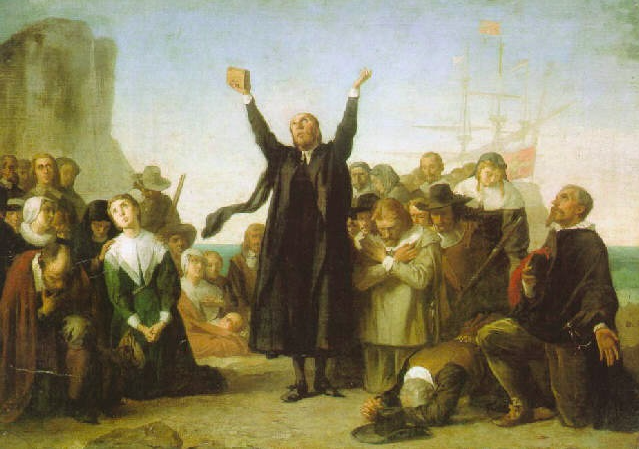On July 21, 2014, President Obama signed an executive order amending two Equal Employment Opportunity clauses, including “gender identity” as a category of unlawful employment discrimination. (Read the full text of the order here.) Despite the petitions of many religious leaders, faith-based organizations, academics, and legal scholars, the order did not contain any references to religious freedom protections.
By: Carl H. Esbeck
While urging President Obama to adopt various policy preferences, a July 14 letter criticized an earlier letter dated June 25, and in doing so made its own representations concerning current law. It is only the representations of law that I address here.
Before this blog could post, on Monday the President issued the promised executive order. It pertains to prohibitions on employment discrimination by federal contractors. In addition to the existing prohibited bases of discrimination, as he had promised the President added sexual orientation and gender identity. Left intact was an exemption for religious employers who take into account religion when making their employment decisions. That exemption was added in December 2002 in order that religious employers could preserve their faith character while still competing for federal contracts, often for world relief and prisoner rehabilitation. The religious exemption is patterned after the one in Title VII of the 1964 Civil Rights Act. What I say below about the Title VII exemption applies as well to the exemption in the executive order of December 2002. Moreover, because the Religious Freedom Restoration Act (RFRA) applies to all federal law, what I say below concerning RFRA bears as well on the new executive order.
The July 14 letter (p. 2), claims that the Religious Freedom Restoration Act (RFRA) cannot provide relief to a religious organization shut out of the opportunity to compete for federal contracts. However, a prima facie claim under RFRA does apply to most burdens on religious belief, including the denial of government funding on account of religion. RFRA “applies to all federal law, and to the implementation of that law” (42 U.S.C. § 2000bb-3(a)). Indeed, we know Congress expressly contemplated funding denials as just such a burden (Id. at 2000bb-4). A letter from Professor Douglas Laycock to Attorney General Holder detailing this argument has been public for five years and is found here. Of course, that a funding denial can state a RFRA claim does not mean that every such claim will be successful. As the Supreme Court has repeatedly pointed out, each claim has to be taken up case-by-case and a balance struck between competing interests. The application of RFRA to employment nondiscrimination requirements tied to federal funding was confirmed in a legal opinion by the Office of Legal Counsel, US Department of Justice, available here. President Obama has defended the OLC Opinion, as he should, including when criticized at a town-hall meeting at the University of Maryland in July of 2011.
The July 14 letter (pp. 2-3) understates the scope of the two religious exemptions in Title VII of the 1964 Civil Rights Act. Title VII prohibits employment discrimination on the bases of race, national origin, sex, and religion. The exemptions, however, permit religious organizations to take into account their religious convictions when making employment decisions. “Congress intended the explicit exemptions to Title VII to enable religious organizations to create and maintain communities composed solely of individuals faithful to their doctrinal practices, whether or not every individual plays a direct role in the organization’s ‘religious activities.’ … We conclude that the permission to employ persons ‘of a particular religion’ includes permission to employ only persons whose beliefs and conduct are consistent with the employer’s religious precepts,” Little v. Wuerl , 929 F.2d 944, 951 (3d Cir. 1991). Contrary to the letter, the exemptions are not limited to hiring nor are they limited to preferences for employees of the same faith as the employer. See also Curay-Cramer v. Ursuline Acad. of Wilmington, Del., Inc. , 450 F.3d 130, 138-42 (3d Cir. 2006); Hall v. Baptist Memorial Health Care Corp , 215 F.3d 618, 622-24 (6th Cir. 2000); Killinger v. Samford University , 113 F.3d 196, 200 (11th Cir. 1997).
The two letters agree that, under Title VII, a religious organization may be sued for employment discrimination on the bases of race, national origin, and sex, but not as to religion. But “religious” is not narrowly doctrinal or creedal but reaches beyond worship and denominations. To show how this works, assume that a nurse at a religious school sues alleging that he was dismissed for reasons of his sex. Further assume that the school answers by denying the charge of sex discrimination and alleging that the adverse employment action was for religious reasons. Specifically, the school avers that by cohabiting with his girlfriend the nurse has violated the school’s code of conduct which reflects its religious character and mission, one provision of which states that sexual intimacy is to be confined to marriage. Contrary to the July 14 letter, enforcement of the conduct code is permitted by the exemptions and well established in the law. In addition to the foregoing cases, see Cline v. Catholic Diocese of Toledo , 206 F.3d 651, 658-59 (6th Cir. 2000); Boyd v. Harding Acad. of Memphis, Inc. , 88 F.3d 410, 413-14 (6th Cir. 1996);Geary v. Visitation of the Blessed Virgin Mary Parish School, , 7 F.3d 324, 327, 330 (3d Cir. 1993); DeMarco v. Holy Cross High School , 4 F.3d 166, 170-73 (2d Cir. 1993).
As is typical, assume that the nurse replies that the school’s reliance on the religious code of conduct is pretextual and that the real reason for his dismissal was his sex. Assume that the nurse seeks to meet his burden of proving pretext by showing that another employee violated the conduct code without incurring the same adverse consequences. For example, the nurse might show that a school counselor who was not married became pregnant and that she was not fired. The comparison is not to the counselor because she was pregnant, but because she too obviously violated the rule against sexual intimacy outside of marriage. If the comparison is to another employee with a similar job, then the nurse has created a question of fact as to whether his firing was for reasons of his sex or because he violated the conduct code. Key is whether the religious employer has applied the moral conduct code evenhandedly without regard to the sex of its employees.
The July 14 letter (p. 3) also understates the scope of the holding in Hosanna-Tabor Evangelical Lutheran Church & School v. EEOC , 132 S. Ct. 694 (2012
). First, the definition of “minister,” in this case about discrimination law and religious employers, is not tethered to a “special relationship with congregants,” as the Letter claims. In Hosanna-Tabor, a fourth grade teacher was found to be a “minister.” She occupied a classroom not a pulpit; she had students not congregants. The case was about the religious leadership of a religious organization and not narrowly about churches and clergy, or else a grade school teacher could not be counted as a ministerial employee. Second, the case was about what the Supreme Court called “internal church governance” (Id. at 706). Hosanna-Tabor relied heavily on cases involving disputes over church polity or organizational structure, so a religious organization’s choice of polity is also within the protected sphere of “governance.” This means that internal governance is about more than the ministerial exception. It is not narrowly confined, as the July 14 letter would have it, to hiring or firing clergy.
Finally, the July 14 letter (p. 3) complains about the scope of the religious exemption the Letter of June 25 requested of the President in what was then a forthcoming executive order to expand the protected classes receiving employment nondiscrimination protection in federal contracts. Various policy reasons are given in the July 14 letter, but I want to focus on the claim that the requested exemption must be rejected because it would operate to take away this nondiscrimination protection and thereby impose a new burden on employees of federal contractors. The letter, moreover, says that this imposition fails to respect the dignity of these employees. A lot of readers will recognize this casting of a newly promulgated regulation as an entitlement which is then prohibitively “burdened” as a line of argumentation rejected just a few weeks ago in Burwell v. Hobby Lobby Stores, Inc., 2014 WL 2921709 (2014). Once a court’s analysis, as under RFRA, takes up the task of interest balancing, then certainly the loss of a benefit that falls on third parties, such as the employees of federal contractors, is properly part of the mix. But Hobby Lobby rejected the Government’s claim that a religious exemption is never permitted to withhold a promised new benefit from employees when protecting religious conscience. The Court saw the argument for what it was: “By framing any Government regulation as benefiting a third party, the Government could turn all regulations into entitlements to which nobody could object on religious grounds, rendering RFRA meaningless” (Id. at *24 n.37). Justice Kennedy fully joined the Court’s opinion, and also added a word about the shibboleth of dignity. Kennedy writes: “In our constitutional tradition, freedom means that all persons have the right to believe … in a divine creator and a divine law. For those who choose this course, free exercise is essential in preserving their own dignity ….” (Id. at *28). In short, religious conscience, including that of religious employers, is also a matter of personal dignity.
This brings us back to the question that launched both letters: How do we live together as a people despite our deepest differences? The nation’s better practice, historically, was to bracket off religious conscience and thereby stop making religious scruples fair game for partisan debate. America’s unique contribution to government theory was to separate matters of religious conscience from the machinery of politics and the will of the majority. That approach has brought us sectarian peace despite our unprecedented religious pluralism. Why trade in a system that has served this country so well for one that has served others so poorly?
Carl H. Esbeck is the R.B. Price Professor Emeritus and Isabelle Wade & Paul C. Lyda Professor Emeritus at the University of Missouri School of Law.
This piece was originally authored on July 22, 2014 for the Religious Freedom Project at Georgetown’s Berkley Center for Religion, Peace, and World Affair.
THE RFI BLOG

Myths of Religious Nationalism in America and Abroad

France’s Olympic Hijab Ban Violates International Law And Exacerbates Tensions

RFI Briefs USCIRF on Lessons from 25 Years of U.S. Designating Religious Freedom Violators

Thought Police: Protecting the People from Prayer

A Religious “Delaware”: Establishing a State Haven for Religious Corporations
CORNERSTONE FORUM

Challenges to Religious Freedom in Iraq and the Critical Need for Action

Public Bioethics & the Failure of Expressive Individualism

Religious Liberty in American Higher Education

Scotland’s Kate Forbes and the March of Secularism


